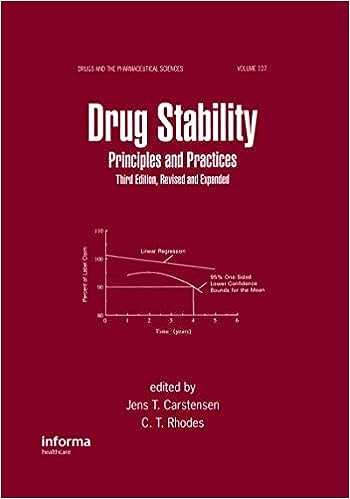Understanding the fundamental principles of stability is essential for ensuring the quality and efficacy of pharmaceutical products. Stability refers to the ability of a drug product to maintain its physical, chemical, and microbiological attributes within acceptable limits throughout its shelf life under specified storage conditions.
Chemical Degradation Pathway
Chemical degradation is a common pathway for the deterioration of pharmaceutical products. Key principles include:
- Hydrolysis: Chemical degradation involving the reaction of a compound with water, resulting in the breakdown of chemical bonds and the formation of degradation products.
- Oxidation: The reaction of a compound with oxygen, leading to the loss of electrons and the generation
Physical Degradation Pathway
Physical degradation refers to changes in the physical characteristics of a drug product without the involvement of chemical reactions. Key principles include:
- Precipitation: The formation of insoluble particles or crystals within the drug product, leading to changes in appearance, texture, and drug release properties.
- Polymorphic Transformation: The conversion of one crystalline form of a compound to another, which can alter its physical stability, solubility, and bioavailability.
- Hygroscopicity: The ability of a compound to absorb moisture from the environment, leading to changes in physical properties, such as hardness, friability, and dissolution rate.
- Absorption of Light: Exposure to light, especially in the ultraviolet (UV) and visible spectra, can cause photochemical reactions and physical changes in drug molecules, leading to degradation.
Microbiological Degradation Pathway
Microbiological degradation involves the growth of microorganisms, such as bacteria, fungi, and yeast, in drug products, leading to contamination and degradation. Key principles include:
- Contamination: The introduction of microorganisms into drug products during manufacturing, packaging, or storage, which can lead to spoilage, loss of potency, and the formation of toxins.
- Microbial Growth: The proliferation of microorganisms in drug products under favorable environmental conditions, such as high humidity, elevated temperature, and nutrient-rich media, leading to degradation and reduced shelf life.
- Preservative Efficacy: The effectiveness of preservatives in preventing microbial growth and contamination in multi-dose formulations, ensuring product stability and safety throughout its shelf life.
Conclusion
Understanding the fundamental principles of stability, including chemical, physical, and microbiological degradation pathways, is essential for developing and maintaining high-quality pharmaceutical products. By identifying and mitigating factors that contribute to degradation, pharmaceutical companies can ensure the stability, efficacy, and safety of their drug products, ultimately benefiting patients and healthcare providers.
